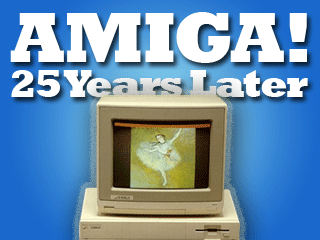 I’m sorry, but I just can’t resist any news story involving Commodore’s fabulously feeble early home PC, the VIC-20. The Personal Computer Museum in Brantford, Ontario plans to celebrate its fifth anniversary this Saturday by using Twitter from one. And no, it’s not a VIC-20 that’s been modded for the purpose–it’s a stock unit with a whopping 5KB of RAM and a tape drive.
I’m sorry, but I just can’t resist any news story involving Commodore’s fabulously feeble early home PC, the VIC-20. The Personal Computer Museum in Brantford, Ontario plans to celebrate its fifth anniversary this Saturday by using Twitter from one. And no, it’s not a VIC-20 that’s been modded for the purpose–it’s a stock unit with a whopping 5KB of RAM and a tape drive.
The VIC will Tweet using TweetVER, a software platform which the Museum hopes to port to other classic computers. (Me, I’ll be even more excited when it becomes available for the TRS-80 Model I, or at least the Atari 400.)
It’s not the first time that PC enthusiasts have used a very old machine for a very new purpose–here, for instance, is an Apple II browsing the Web. But there’s something particularly appropriate about Twitter being the subject of this stunt.
It’s one of the few popular modern services that really doesn’t need to be dumbed down for the VIC: The machine’s display shows 23 rows of 22 characters apiece, so up to three 140-character Tweets could fit on it at one time. And the system’s crummy graphics–176 by 184 with 16 colors–aren’t really an issue, because, hey, Twitter doesn’t let you post images. Twitter can be Twitter on a computer that’s nearly thirty years old; that just wouldn’t be true of Facebook, YouTube, or Gmail. Probably not World of Warcraft, either.
I’ve always said that Twitter isn’t that much different from the BBSs I was dialing into back when the VIC-20 was new. This is proof. I predict that there’s at least a fifteen percent chance that the VIC-20 will perform like a champ but that something will go wrong with Twitter itself during the experiment…



 Twenty-five years ago today, a new personal computer was unveiled at a
Twenty-five years ago today, a new personal computer was unveiled at a  I’m sorry, but I just can’t resist any news story involving
I’m sorry, but I just can’t resist any news story involving 
